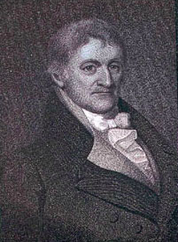About Joseph HabershamJoseph Habersham of Savannah, Georgia (1751-1815) was a Revolutionary War hero and political leader. He was a colonel in the Continental Army, a member of Continental Congress and the Georgia Convention that ratified the Constitution in 1788. Educated at Princeton, he returned to Georgia to help organize the "Liberty Boys" as the Revolution approached. With other Patriots, he organized the Council of Safety at Tondee's Tavern, June 27, 1775. On January 17, 1776, leading a small group, he captured and placed under guard Sir James Wright, British Colonial Governor. With Captain Brown, he commanded the first commissioned vessel of the Revolution. He was twice Speaker of the General Assembly, in Georgia's first legislative body. In 1785, Joseph Habersham signed the first state university charter granted in America for the University of Georgia. He served as Postmaster General under President Washington, Adams, and Jefferson. From 1802 until his death, he was president of the Georgia branch of the Bank of the United States. Habersham County, created December 15, 1818, was named for Joseph Habersham. (Credit: historical marker transcription, 068-7, Georgia Historical Commission, 1958) |
 |
Chapter History
On February 12, 1900, at the invitation of Georgia Governor and Mrs. Allen D. Candler, the Joseph Habersham Chapter was organized at the Governor's Mansion. The date was chosen because it was the day General James Edward Oglethorpe landed on Georgia soil at Yamacraw Bluff. The chapter was named for a gallant young Revolutionary soldier name Joseph Habersham, who, with two others, captured a British vessel loaded with gun powder. Joseph Habersham distinguished himself further when he captured British Governor Wright as he sat at dinner with his council.
Just three days later, on February 15, 1900, the Joseph Habersham Chapter was admitted to the National Society Daughters of the American Revolution. Mrs. William Lawson Peel was the inspiration for the chapter and served as the first chapter regent. She had superb leadership talents, was a forceful writer and speaker, and a talented musician. The first and main interest of the chapter was the reclamation of neglected records in the State Capitol. The records and rosters of some 5,000 Revolutionary soldiers were collected, and hundreds of letters poured in from other states requesting information on Georgia ancestors. A column was secured in the Atlanta Constitution Newspaper to handle the inquiries, which grew to a full page and continued for three years. Afterwards, these articles were published in book form, constituting Volumes I (1901) and II (1902) of Historical Collections of the Joseph Habersham Chapter, Daughters of the American Revolution. Volume III (1910) contained transcripts of records of early Georgia counties and some history of South Carolina, with hundreds of names of Revolutionary soldiers. At Mrs. Peel's invitation, many distinguished Georgians contributed articles concerning Georgia's early history to these volumes.

